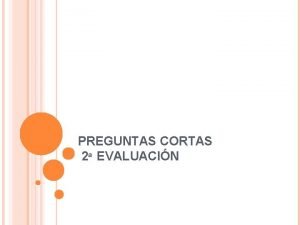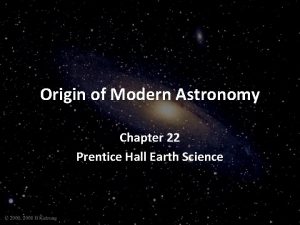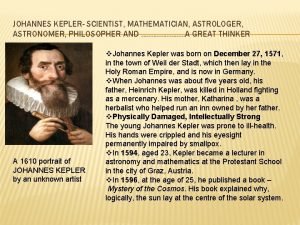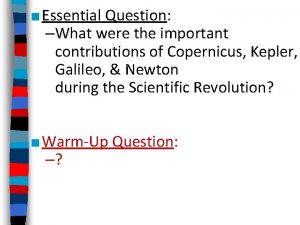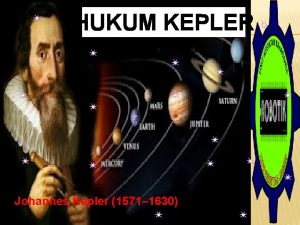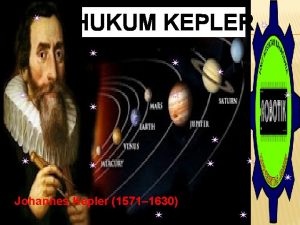Johannes Kepler 1571 1630 The first astrophysicist and






- Slides: 6

Johannes Kepler 1571 -1630 “The first astrophysicist and the last scientific astrologer. ”

Key Events in Kepler’s Life 1571: Born in Weil der Stadt, Swabia, Germany 1589 -1594: Attended the University of Tübingen 1600 -1601: Brief cooperation with Tycho Brahe 1609: Published first two laws of planetary motion 1619: Published third law of planetary motion 1627 -1630: Publication of the Rudolphine Tables, involvement in Thirty Years’ War, and death at Regensburg, Bavaria, Germany

Kepler’s First Model of the Solar System Based on his hypothesis of a geometrically ordered universe Includes only six planets (Uranus and Neptune not discovered yet) Accepted by Kepler for many years, until he discovered the planetary laws

Kepler’s Laws of Planetary Motion First law: “A planet moves in an ellipse, with the sun at one focus” Second law: “A planet sweeps out equal areas and equal time” Third law: “The squares of the periods of the planets are proportional to the cubes of their average distances from the sun”

Major Works by Kepler Mysterium Cosmographicum: Published 1596. Outlines his theory of a geometric universe and how it came about Astronomia Nova: Published 1609. Discourse on Tycho’s data and the results of Kepler’s investigation of Mars’ orbit, significant for its first two laws of planetary motion Harmonices Mundi: Published 1619. Discusses the third and final law of planetary motion Rudolphine Tables: Published 1627. Kepler’s last major work is a compilation of his and Tycho’s data in the form of star charts and planetary catalogues, named after Holy Roman Emperor Rudolf II

References http: //www-history. mcs. standrews. ac. uk/Biographies/Kepler. html http: //galileo. rice. edu/sci/kepler. html http: //www. hulu. com/watch/63319/cosmos-theharmony-of-the-worlds
